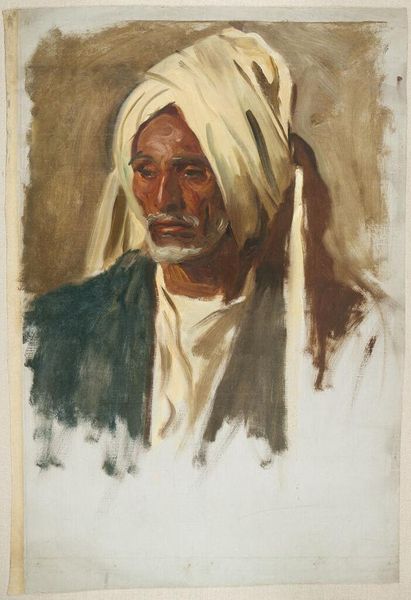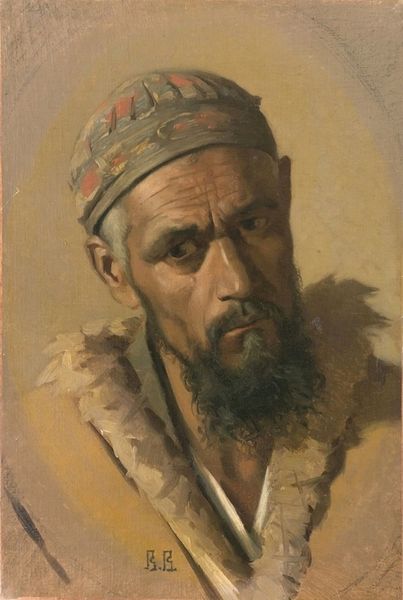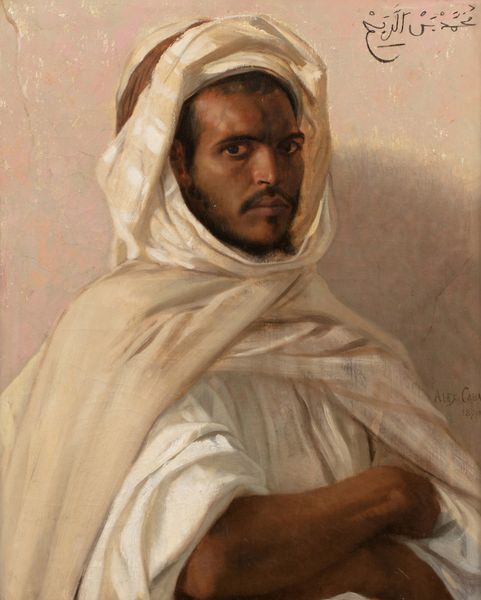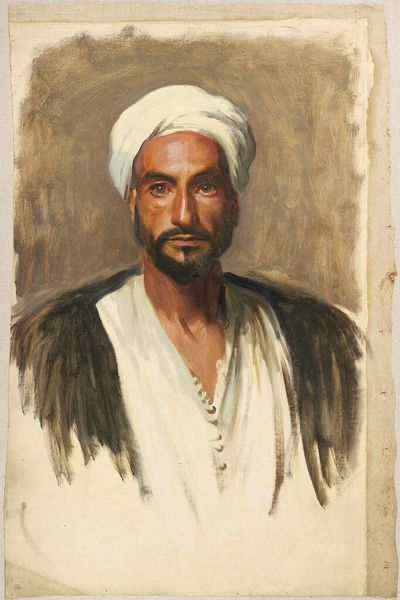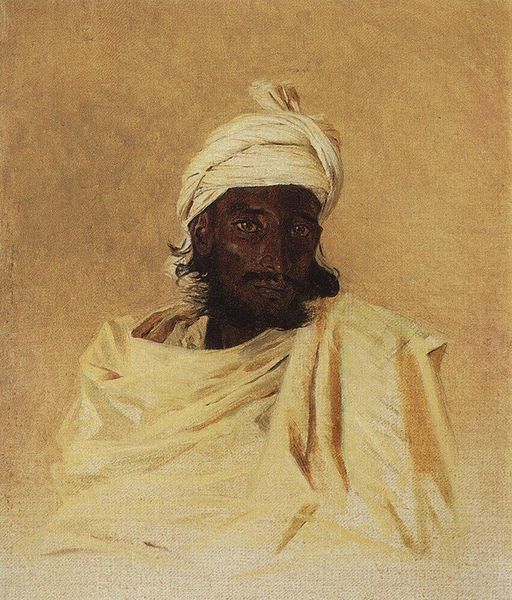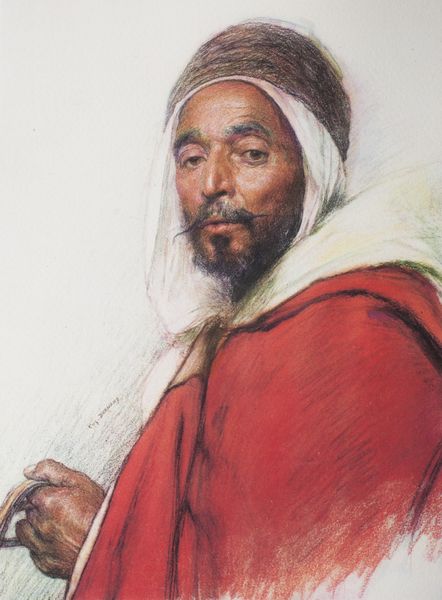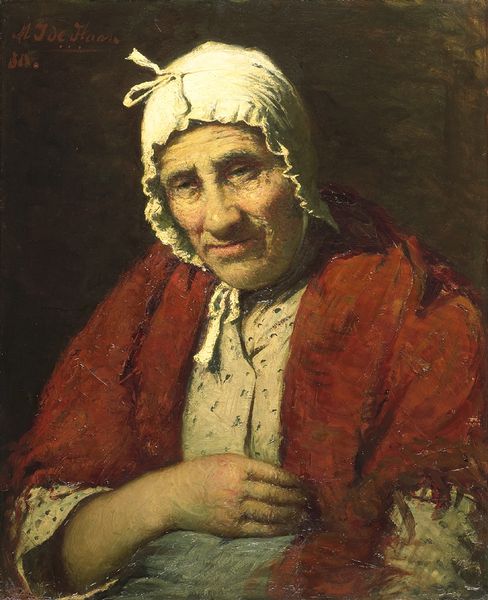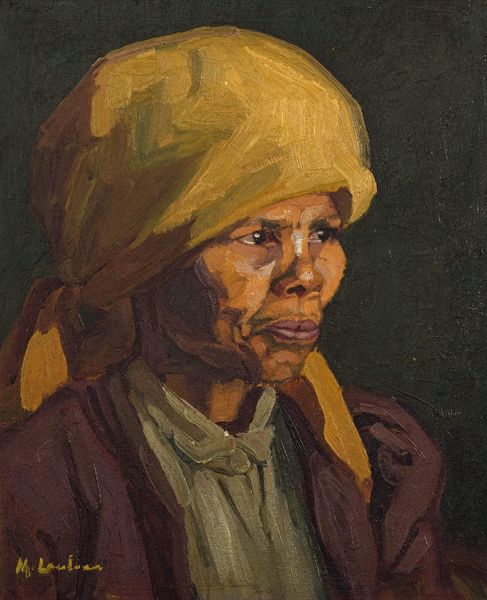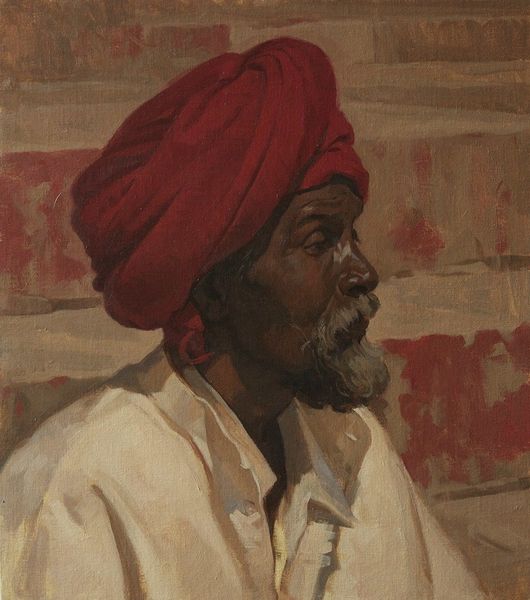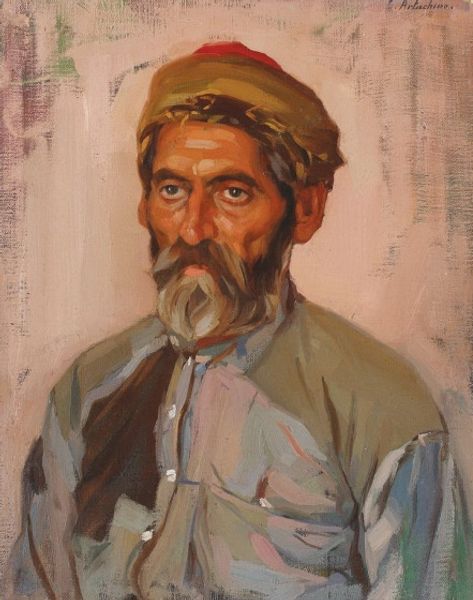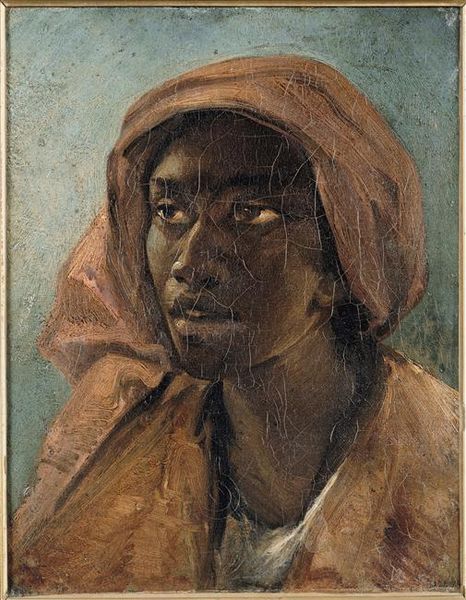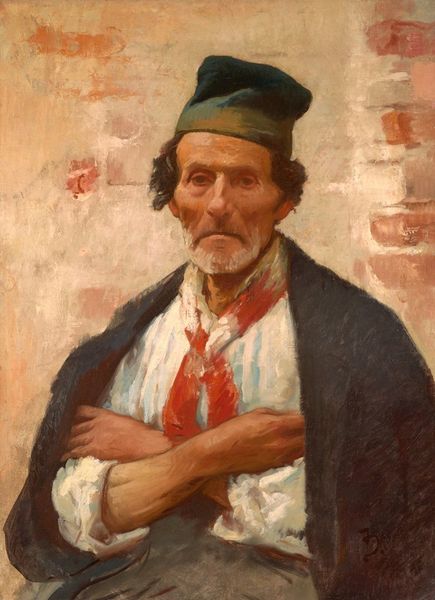
Dimensions: 64.5 x 58.5 cm
Copyright: Public domain
Editor: This oil painting is called "Head of a Kirgiz-convict" by Vasily Perov, created in 1873. The man’s direct gaze is very compelling. How do you interpret this work? Curator: It’s vital to understand the context of Perov's work. This piece forces us to confront the Russian Empire's treatment of marginalized ethnic groups through penal labor. Perov’s critical realism served as social commentary, drawing attention to injustice. Note the man’s weathered face, the worn clothing… How does this strike you in terms of its political implications? Editor: It does feel very direct. He doesn't look menacing, just… resigned. I guess I hadn’t immediately thought of it in terms of political statement, but his ethnicity definitely factors into his treatment as a convict. Curator: Precisely. This painting stands as an accusation against the dominant power structure and questions its social constructs, something Perov consistently engaged with. We must ask, who is being represented, by whom, and for what purpose? Editor: So, by humanizing this Kirgiz convict, Perov is challenging the dehumanization inherent in the Imperial system. It makes me wonder about the stories behind others who were similarly criminalized, whose identities were also othered. Curator: It is also necessary to think about the reception and potential appropriation of indigenous art and aesthetics. His gaze speaks volumes, doesn’t it? Editor: Absolutely. This has given me a new perspective on the intersection of art and social justice. Curator: And that's what makes engaging with art history so rewarding. It compels us to consider marginalized people’s narrative, prompting deeper reflection of what it means to fight prejudice.
Comments
No comments
Be the first to comment and join the conversation on the ultimate creative platform.
